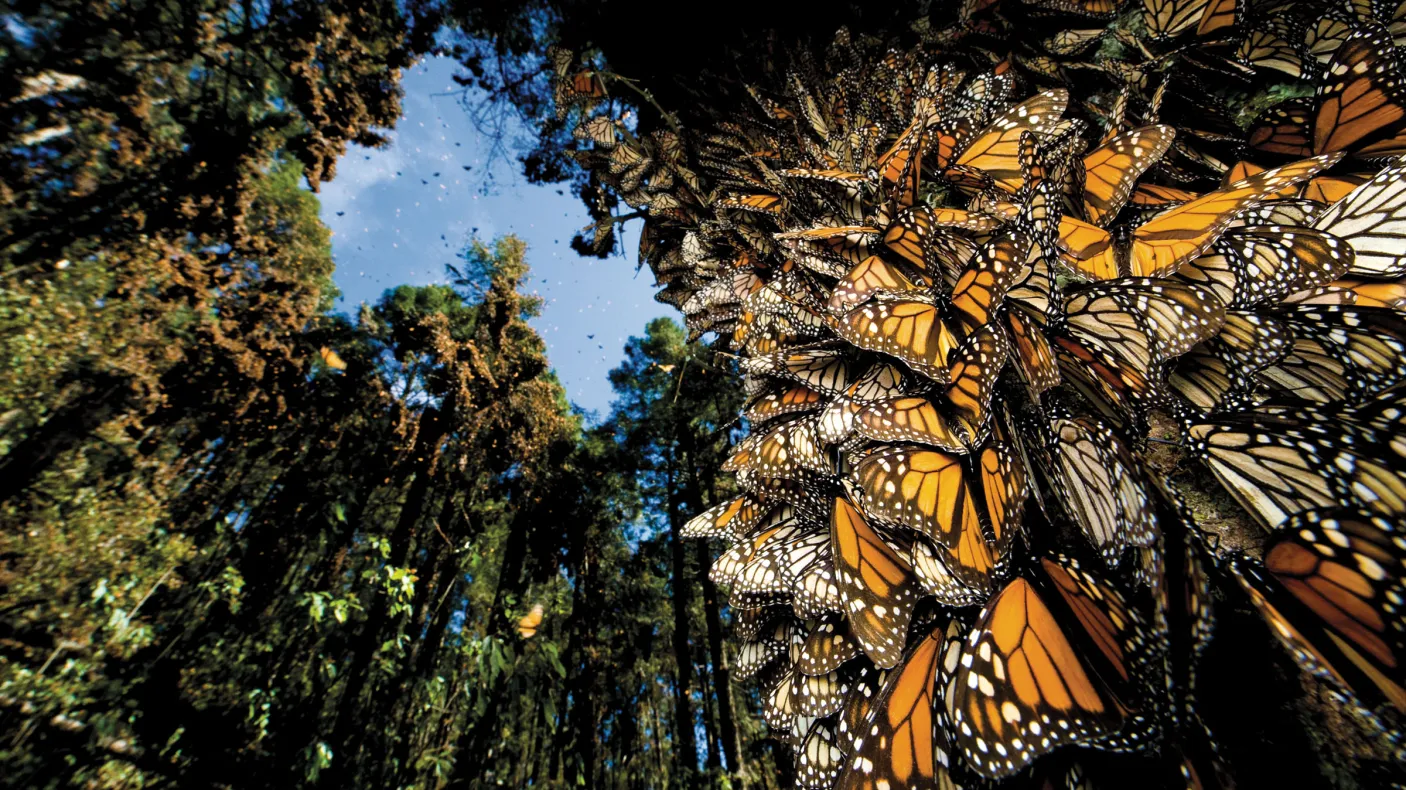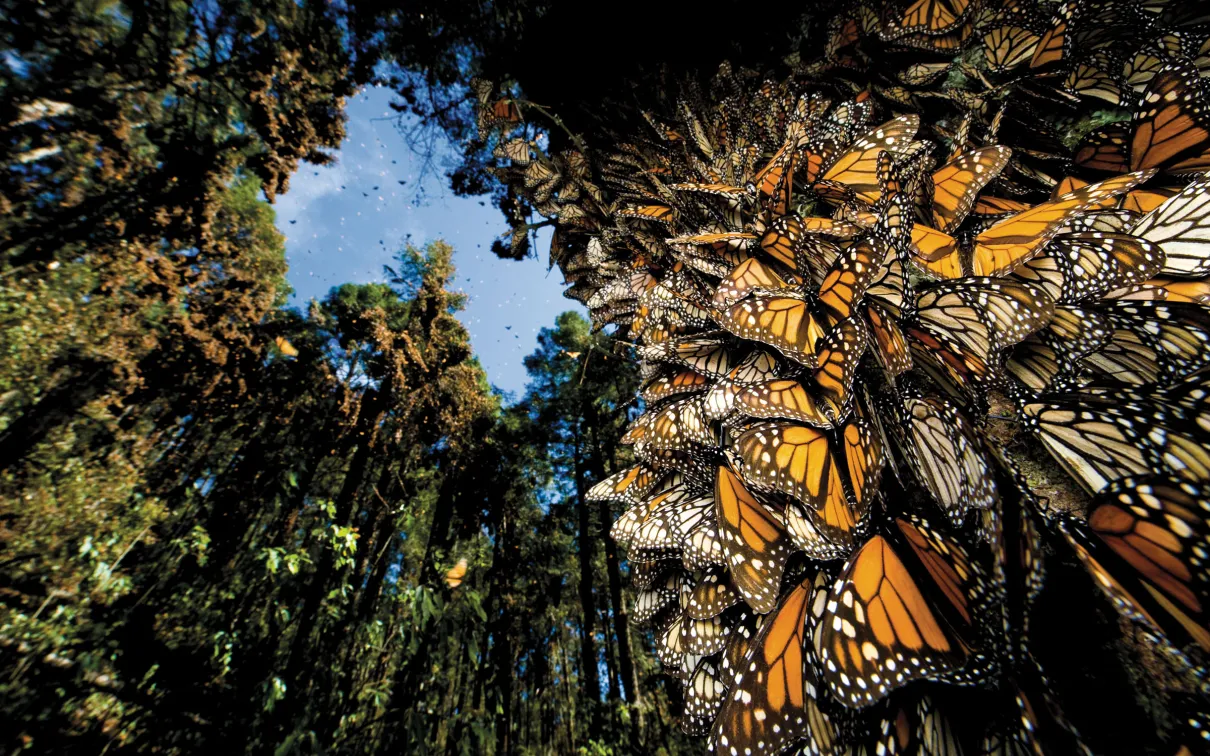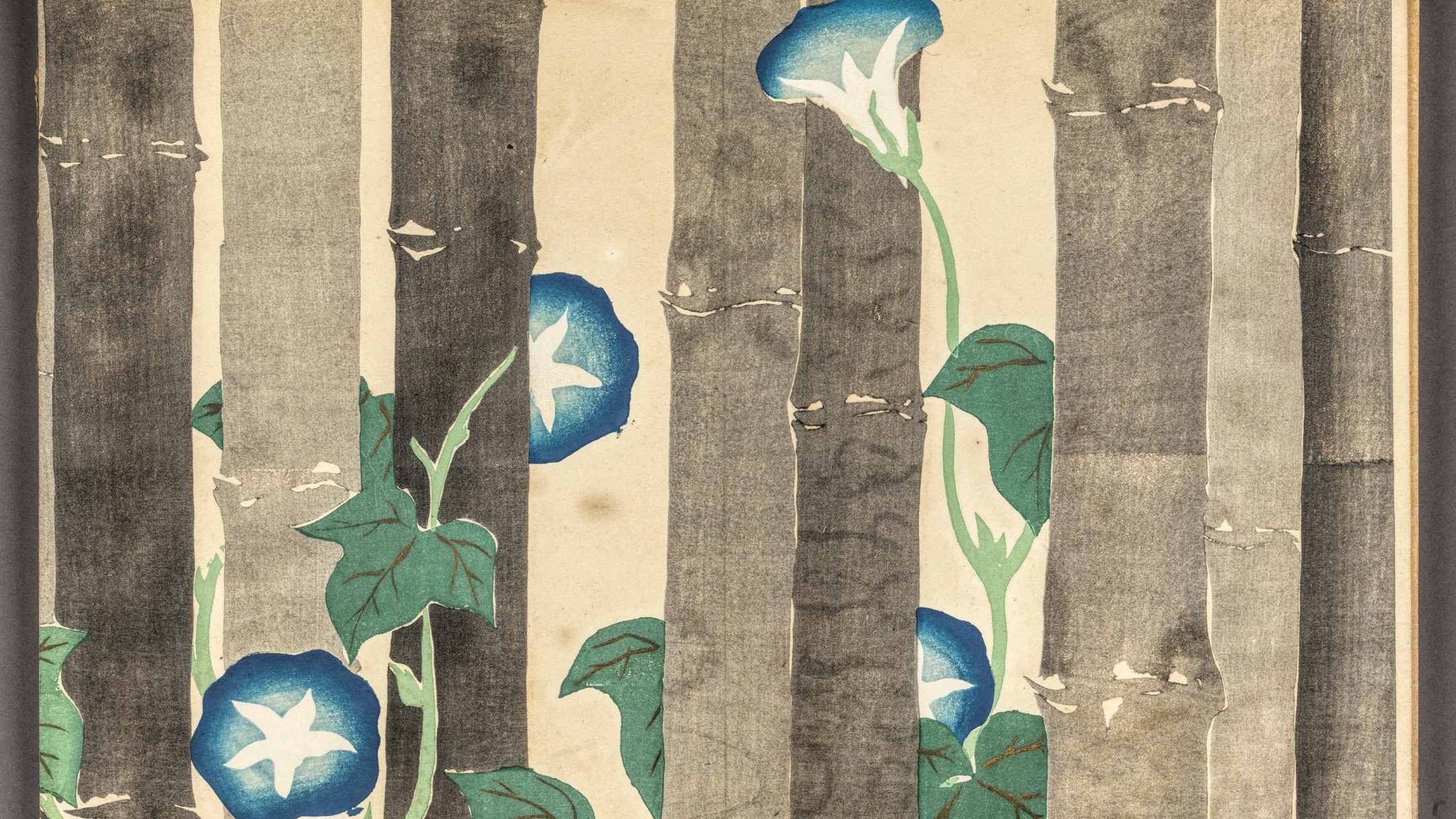A discovery of Monarchs
Published
Category
Author
First
Every summer in Toronto Monarch Butterflies can be spotted fluttering about, but they do not reside here all year. Instead, they partake in a multi-generational journey north during the spring and summer and in the fall an epic migration south. We now know this because of a ROM entomologist’s lifetime of work.
Fifty years ago this January, Fred and Norah Urquhart got a call from Catalina and Ken Brugger in Mexico, who were on the trail of migrating Monarch Butterflies. This call would definitively answer the riddle of where Monarchs went in the winter and was revealed.
to the public in the cover story of National Geographic’s August 1976 edition, written by Fred Urquhart. In it, he describes that phone call: “‘We have located the colony!’ he said, unable to control the excitement in his voice. ‘We have found them—millions of Monarchs—in evergreens beside a mountain clearing.’”
Such was how the news of the Monarchs’ epic migration—from their most northerly summer grounds, ranging from the Prairies to the Maritimes to as far north as the milkweed will allow, to the overwintering grounds of central Mexico—was shared with the world.
Long revered in central Mexico and representing the returning souls of ancestors for Dia de los Muertos each November, Monarch Butterflies are one of nature’s marvels. What wasn’t known to the locals was that the Monarchs, which hung by the hundreds of thousands in oyamel fir trees, could have included the same ones that fluttered around Fred’s childhood hometown of Toronto.
For unlike other butterfly species, whose eggs, caterpillars, chrysalids or adults survive harsh Ontario winters, no stage of the Monarch was ever found in the winter months. So where Monarchs went and how they arrived back each year were questions that fascinated Fred. As a master’s student at the University of Toronto, he started working at ROM (then operated as part of the university) looking after the entomology collections. For over twenty years, Fred studied Monarchs and refined the delicate tagging techniques to enable their movements to be traced; though not employed at ROM, Norah was Fred’s lifelong partner in both marriage and lepidopterology endeavours. Weighing less than a gram, butterflies were too delicate for typical animal trackers. The solution was a small sticker with simple instructions printed in tiny letters affixed to the butterfly wing, asking people who came across such a tagged Monarch to return it to the University of Toronto.
Over the decades, a picture of the Monarchs’ long autumnal trip south and generational waves of their return journey north began to slowly emerge. With the help of volunteers—“community scientists” in today’s terminology—butterflies were tagged and released in Ontario. People who found them, sent them back to Fred in Toronto. He shared some of the findings in publications such as Report on the Studies of the Movements of the Monarch Butterfly in North America (1955) and his book The Monarch Butterfly (1960), which tantalizingly sketched out the butterfly’s movements across the continent. After having risen to the position of Director of Zoology and Palaeontology, he left ROM in 1961 and continued is research at the University of Toronto.
Tracking the Monarchs to their overwintering grounds was done by volunteers Ken and Catalina, who lived in Mexico and responded to a newspaper posting in 1972 from the Urquharts. Their multi-year tracking efforts led them to mountainous oyamel fir trees on January 2, 1975. There, among the trees laden with roughly 60 million semidormant butterflies, was the winter home of the Monarchs. The mountain forest areas are now protected by the government of Mexico as the Monarch Butterfly Biosphere Reserve, a UNESCO World Heritage site. Though it may take only weeks for a Monarch to fly south, it took a lifetime of work for Fred and Norah to piece that flight path together. So in late summer, when you see a Monarch Butterfly sipping nectar or flitting about among some flowers, consider its momentous and perilous journey ahead.
Monarchs on display at ROM
Visitors can check out Monarchs at ROM in Nature in Brilliant Colour , where nine are on display to illustrate the biomimicry that this species and non-poisonous Viceroy Butterflies share. In this year’s Wildlife Photographer of the Year exhibition, photojournalist Jamie Rojo’s photo essay shares his images from the overwintering areas of Mexico. And keen observers in the Life in Crisis: Schad Gallery of Biodiversity may look up to find Monarchs flying among the birds.
Second
David McKay is a Senior Publicist at ROM


